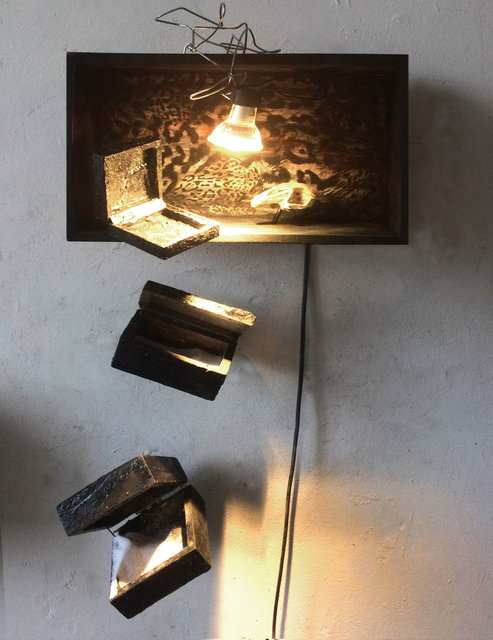Robert Broekhuis and Maurice van Tellingen : Black Box / Green Grass - 13 April 25 May 2019
Five very long flights of stairs on the Korte Prinsengracht brought Robert Broekhuis and Maurice van Tellingen in contact, in their neighboring studios. There they became acquainted with each other's work and came to admire each other's artistic production. Two artists, two visions in which both reduce the image to its essence and work from a strictly personal mythology reflecting on the human condition. What you see is its residue. Maurice van Tellingen dissects and reassembles “reality” in reconstructions, or rather concentrates, that look suspiciously like reality, but on closer inspection show the reverse. Robert Broekhuis's work is tranquil emotion, reduced to the minimum. He considers his work an investigation into the anatomy of silence. Robert Broekhuis Beauty, violence and loss enter into a paradoxical relationship in his recent work. This exhibition explores the bizarre miracle that trauma can, after years of speechlessness, lead to what Broekhuis calls the collateral beauty of a new visual language, which he also then had to master. The works from the BLACK BOX series can be regarded as sculptural metaphors, while his piece, Gedanken über Isaac Newton is a play about lightness and the absurd and shows his zest for life. Larissa Kikol, art critic at Die Zeit and Kunstforum, recently wrote of his work (in the forthcoming book on Broekhuis) that it is based on two points of view: the abstract story and the story that is hidden behind an abstract image. She notes an affinity with the Arte Povera movement, not to focus on the poverty of the materials, but rather to emphasize the meaning of their reality and how they direct a pictorial story. That is why he uses materials as burnt wood, broken glass, salt, lead and tar. Maurice van Tellingen What is true, what is valuable, what is real? Where are the boundaries of our social reality? Maurice Van Tellingen’s works show a world that is on the edge of our experience and that we can still understand as valuable or meaningful. And while, as a spectator, you think that you are looking at the stage from the front, you find yourself standing behind or in the wings. Miniature scenes devoid of humans, semi-3D scale models of reality: an absurdist point of view, with a basis in existentialism, Van Tellingen investigates the human condition using the objects of everyday life--caravans, garage doors, washing machines, French Windows—to question human identity, to try to find answers in the constructs that we make to endure our existence: the exoskeleton we create from clothing, artifacts and architecture, without which we would perish. Likewise, we would be lost without our social constructs, our stories and beliefs and conventions. From these, the questions arise of how we value objects and ideas and what is the language of objects.


